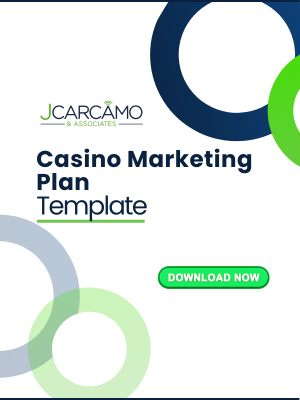In our business, the only constant seems to be change; a solid marketing plan isn’t a luxury; it’s a necessity. Uncertainty is built into our industry, from competitor promotions that come out of nowhere to new technology, shifting customer habits, weather interruptions, or even team turnover. A well-crafted marketing plan remains the best defense against scattered priorities, rushed campaigns, and wasted budgets.
We don’t always know what’s up ahead. But when your plan is grounded in strategy, those last-minute changes feel a little less chaotic and much more manageable. A solid plan helps us pivot with purpose, not panic.
You’re not alone if you’re feeling the pressure of tighter resources, increased competition, or leadership demanding results yesterday. The good news? Getting your plan in shape doesn’t require a complete overhaul. It just needs alignment with your strategy, customers, and team.
Let’s be honest: we’ve all had moments when our perfectly crafted plan went out the window. It could have been a last-minute concert, a call to “just do a mailer, ” or a random request that didn’t align.
But here’s the difference between a brilliant and scattered plan: the smart plan gives you a starting point for alignment, even when you must pivot. It helps your team make better decisions, move faster, and stop chasing one-off ideas that don’t support your bigger goals.
And with Casino Marketing Boot Camp right around the corner — focused entirely on building better strategies and more actionable plans — this is the perfect time to review your current approach and make adjustments where needed.
That’s why now is a great time to take a fresh look at your marketing plan and ask: Is it still working? Or are you just working harder?
The Quick Plan Health Check: Your Marketing Vital Signs
Just as doctors check vital signs during every visit, casino marketers should regularly assess their plan’s health. This isn’t busy work. It’s preventative care that stops minor issues from becoming major problems.
When competitors launch new promotions weekly and customer preferences shift rapidly, your marketing plan can quietly drift out of alignment. Monthly plan check-ups help identify when you’re veering off-course before you waste significant resources or miss opportunities.
Take five minutes now to gauge your plan’s current health with these five critical questions:
- Can you state your plan’s primary strategic objective in one sentence? If you can’t articulate it, your team definitely can’t follow it. Clarity drives alignment across departments, from hosts to operations to leadership.
- Does your team reference the plan when making day-to-day decisions? A plan that gathers digital dust isn’t a plan; it’s a documentation exercise. Living plans become decision-making tools that save time and improve consistency.
- Can you name the specific customer segments your plan targets? “Everyone with a players card” isn’t a target audience. Specific segmentation allows for focused messaging and offers that drive higher response rates with lower costs.
- Do your promotions, digital marketing efforts, and hosting activities reinforce each other? Disconnected tactics create customer confusion and internal inefficiency. Integrated approaches amplify your message and maximize your limited marketing dollars.
- Are you measuring results that your GM cares about? Marketing metrics without business impact won’t secure budget or support. When your KPIs align with leadership priorities, your department’s value becomes undeniable.
If you answered “no” to two or more questions, your marketing plan likely needs attention, not necessarily a complete rebuild, but strategic adjustments to make it work harder for you.
Make this check a recurring calendar item. Monthly reviews can catch seasonal drift, while quarterly deep dives can address fundamental misalignments. The most successful regional casino marketers we know gather their teams for a 30-minute plan check-up at least once a month, asking these same questions and making tactical adjustments as needed.
Strategy First, Tactics Second
It’s easy to think that your plan is your strategy, but a plan and a strategy are not the same thing.
Your strategy defines why you’re marketing and who you’re marketing to. Your plan outlines how you’ll execute that strategy: what you’ll do, when, and where.
Without a strategy, you’re just making noise. A strong plan built on strategy simplifies your messaging, sharpens your offers, and helps every department pull in the same direction.
Consider this real-world example: A regional casino launched an email campaign that achieved impressive open rates but failed to drive visits from its most valuable players. Why? The emails weren’t aligned with any strategic objective beyond “increase revenue.” They weren’t targeted to specific segments, didn’t align with the casino’s broader value proposition, and ultimately wasted resources on engaging customers who weren’t a good fit for their most profitable offerings.

Questions to Gut-Check Your Marketing Plan: The Quarterly Deep Dive
While monthly quick checks help maintain alignment, a deeper quarterly review prevents your marketing plan from becoming obsolete. Market conditions evolve, competitors adjust their strategies, and customer preferences shift seasonally, making a thorough quarterly assessment essential for regional casinos.
Set aside half a day each quarter to discuss these deeper questions with your key team members. The ROI on this time investment will be better resource allocation, improved team focus, and marketing that moves your business metrics.
1. Align Your Casino Marketing Plan with Business Goals
What to assess: Review your plan’s stated objectives against your casino’s current business priorities. Look for misalignment that has developed as business conditions have changed.
The value: Generic goals lead to generic results. Instead of “more revenue,” target “more revenue from the X segment.” Rather than “increase visits,” focus on “increase midweek visits from players within a 50-mile radius.” This specificity creates clarity for your team and measurable outcomes for your leadership.
Quarterly importance: Business priorities shift. Perhaps table games have become more critical, or hotel occupancy is now a focus area. Your marketing plan must evolve with these changing priorities.
2. Update Your Plan Based on Current Customer Segments
What to assess: Compare your most recent player data against the audience segments described in your plan. Look for emerging segments, declining groups, or changing visitation patterns.
The value: Customer behavior evolves constantly. Your loyal players may have developed new habits, loyalty may have diluted across competing properties, and digital expectations are continually changing. A plan built on outdated customer insights isn’t just ineffective. It’s counterproductive.
Quarterly importance: Seasonal changes in your player base (summer tourists, winter locals) require different approaches. Quarterly reviews ensure you’re targeting the right people at the right time.
3. Make Your Marketing Plan Actionable for Your Team
What to assess: Survey your team members, including vendors and those outside marketing, about how often they reference the plan and whether it helps them make decisions.
The value: A great plan isn’t buried in a PDF no one reads. It should be accessible, understandable, and guide decisions across departments. When a host requests a special promotion or your slots director wants to run a tournament, does your plan provide the framework to evaluate these ideas?
Quarterly importance: As team members come and go or change roles, the usability of your plan becomes critical for maintaining consistency despite personnel changes.
4. Integrate Tactics Across All Marketing Channels
What to assess: Map out your planned marketing activities for the next quarter and evaluate whether they reinforce each other or compete for attention and resources.
The value: When your promotions, emails, ads, and host strategies reinforce each other, you maximize impact without increasing spend. Integrated approaches create a multiplier effect, making your limited marketing dollars work harder.
Quarterly importance: As you add new initiatives each quarter, it’s easy for tactical disconnects to develop. Regular reviews prevent the “promotion pile-up” that confuses customers and overwhelms operations.
5. Use the Right KPIs to Measure Casino Marketing Success
What to assess: Review your KPIs against business impact over the past quarter. Eliminate metrics that do not connect to revenue, retention, or strategic goals.
The value: Without meaningful KPIs, like ADT, visitation from high-worth players, or new signups that convert to regular visitors, you’re just guessing. Surface metrics like email opens, likes, views, or coupon redemptions may look good in reports but may not drive real business results.
Quarterly importance: As your competitors adjust their strategies, your definition of success may need to evolve. What was a reasonable conversion rate last quarter might now be underperforming.
6. Adjust Your Strategy Based on Competitor Activity
What to assess: Document new promotions, amenities, or marketing approaches from competitors that have emerged this quarter.
The value: Regional casinos often share customers with competitors and other entertainment options. Understanding how the competitive landscape has evolved helps you position your offerings more effectively and avoid merely matching what others are doing.
Quarterly importance: Competitors rarely announce their strategies far in advance; they just launch them. Quarterly reviews help you identify competitive patterns before they significantly impact your business.
7. Leverage Your Regional Casino’s Local Strengths
What to assess: Evaluate how your marketing plan leverages local knowledge, community connections, and regional events that national chains or larger competitors can’t match.
The value: Regional casinos have unique advantages in community relationships and local understanding. Your marketing plan should capitalize on these strengths rather than trying to compete with bigger properties on their terms.
Quarterly importance: Seasonal events, local business cycles, and community priorities change throughout the year. Quarterly reviews help you align with these regional rhythms.
Set calendar holds now for your quarterly deep dives—treat them as non-negotiable appointments with your business’s future. The most successful regional casino marketers emerge from these sessions with refreshed strategies, clearer priorities, and teams that understand precisely where to focus their limited time and resources.
Strategic Alignment: The Real Measure of Success
Perfect marketing plans don’t exist in regional casinos or anywhere else. The real goal isn’t perfection; it’s strategic alignment that makes your limited resources work harder.
The Power of Aligned Marketing
Regional casinos balance tight budgets against aggressive competitors. Therefore, alignment may create exponential value:
Resource Efficiency: When every marketing dollar supports your core strategy, you eliminate wasted spend on disconnected tactics that don’t move your business forward.
Message Clarity: Customers bombarded with casino offers notice when your messaging is consistent and your value proposition is clear.
Operational Execution: Aligned plans reduce last-minute scrambles, staffing surprises, and the operational headaches that damage customer experience and team morale.
Decision Speed: Teams with aligned plans make faster, better decisions because they have a clear framework for evaluating opportunities and challenges.
From Department Silos to Marketing Unity
Before your marketing plan can align with other departments, it must first unite your own marketing team. Regional casinos typically divide marketing responsibilities across multiple functions:
- Promotions and Events
- Direct Mail
- Advertising (traditional and digital
- Social Media
- Players Club
- Host Department
These divisions often create unintentional silos where each function operates with its priorities, timelines, and success metrics and sometimes working at cross-purposes despite best intentions.
Break down these walls by:
- Creating a unified calendar: Develop a single truth source showing all marketing activities across functions. This visual tool immediately reveals conflicts, gaps, and opportunities for cross-functional reinforcement.
- Establishing shared KPIs: When the direct mail team and digital team are measured on the same outcomes, collaboration replaces competition.
- Implementing cross-functional planning sessions: Monthly meetings where all marketing functions present their upcoming initiatives create natural opportunities for alignment.
- Developing consistent customer journeys: Map how customers experience your casino across all touchpoints, from host calls, email, direct mail, and property visits. Identify and eliminate contradictory messages or experiences.
- Training on the “why” behind the plan: Ensure every marketing team member, regardless of function, understands the strategic reasoning behind your plan, not just their tactical role in executing it.
When your marketing team operates as a unified force rather than separate specialties, your ability to align with broader departments increases dramatically.
Bringing Your Team Along for the Ride
A marketing plan that lives only in the marketing department isn’t working hard enough. Your most valuable plan creates alignment across the entire operation:
Creating Cross-Departmental Alignment
Leadership Alignment:
- Distill your marketing plan into executive summaries that focus on business outcomes
- Connect marketing activities to the metrics your GM and ownership track most closely
- Provide regular updates that demonstrate progress against strategic objectives
- Position marketing as a strategic business driver, not just a cost center
Host Team Alignment:
- Share player segment priorities so that hosts can focus development efforts on strategically valuable players
- Provide talking points about upcoming promotions that reinforce your brand positioning
- Include hosts in early planning stages to incorporate their player insights
- Create host-specific tracking methods that connect their activities to broader marketing KPIs
Operations Alignment:
- Develop staffing forecasts based on expected promotion response
- Create visual promotion calendars for break rooms and pre-shift meetings
- Explain the “why” behind promotions so the floor staff can reinforce key messages
- Establish a feedback loop for operational insights that might improve future promotions
Finance Alignment:
- Connect marketing initiatives to revenue projections
- Develop ROI measurements that finance respects
- Schedule quarterly review sessions to evaluate performance against projections
- Create shared definitions of success that bridge marketing and financial perspectives
Finding the Right Alignment Tools for Your Casino
Every casino has a unique culture, communication style, and operational rhythm. The most effective alignment tools are those that naturally fit into your organization’s existing patterns rather than forcing radical change. There’s no one-size-fits-all approach. What works for a corporate-owned property might not resonate at an independent casino with deep community roots.
The key is experimentation. Start with one or two tools most compatible with your team’s current practices, measure their effectiveness, gather feedback, and adjust as needed. Some tools might require modification to fit your specific environment, while others might surprise you with their immediate impact.
Remember that the best tool is the one your team actually uses. A sophisticated dashboard that nobody references is far less valuable than a simple shared document that becomes part of daily conversations.
Consider these practical options, and don’t be afraid to adapt them to your casino’s specific needs:
- The One-Pager: Create a single-page version of your marketing plan that highlights key initiatives, target segments, and success metrics. This becomes a powerful reference tool for decision-making across departments.
- Visual Calendar: Develop a prominently displayed marketing calendar in areas where different departments gather. Use color-coding to indicate expected business volume, staffing needs, and key promotions.
- Weekly Wins Email: Send a brief weekly update to all departments highlighting marketing wins, upcoming initiatives, and specific ways other departments can support success.
- Cross-Department Shadowing: Implement a program where team members from different departments spend a day observing marketing functions and vice versa.
- Decision Framework Cards: Create pocket-sized cards that outline your core strategy and customer segments. Team members can reference these cards when making day-to-day decisions.
The most successful regional casinos don’t just create marketing plans; they also execute them effectively. They have a casino-wide understanding of how marketing strategy drives business results. When your plan becomes a shared roadmap rather than a departmental document, you achieve the alignment that drives sustainable growth.
The Casino Marketing Plan: Your Strategic Pivot Point
The reality is that you can’t predict every twist and turn in this industry. But with a thoughtful marketing plan, you’ll always have a point to pivot from—one built on insight, not impulse.
Let this be your nudge to reevaluate what you’ve got, start fresh if needed, and take the next step toward more strategic, aligned marketing.
“A plan won’t predict the future—but it can help you navigate it better.”
Before you go, consider this question: What would your customers not miss if you stopped doing it tomorrow? The answer might be the first step toward a more focused, effective marketing plan.



Recent Comments